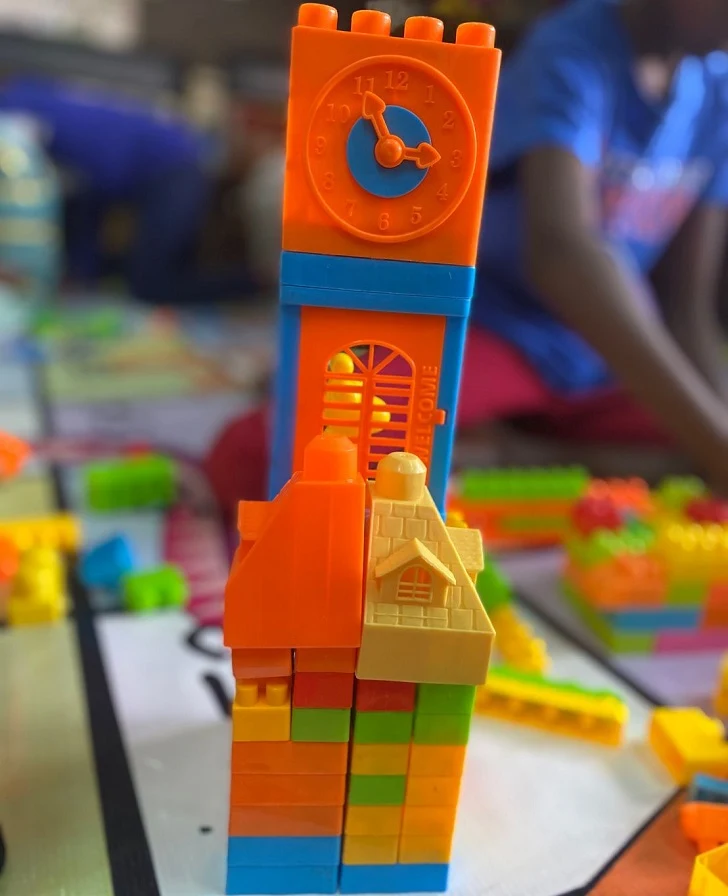BLOCK BUILDING is FUN!
In their work with blocks, children come to understand
the value of process rather than product, among other concepts. In
the first stage, children carry the blocks or make stacks that are satisfying
to knock down. Repetition is characteristic and they enjoy the sense of
competency and power achieved by stacking, knocking down, and stacking again.
Following the stacking/knocking down phase real construction
begins. Towers and rows of blocks are expanded and embellished upon. Children
begin bridging, making enclosures, and creating structures that represent an
aspect of play (such as a train station or playground). In later stages of
development children reproduce familiar structures and experiences they have
investigated. Children at any age need the opportunity to progress through all
the stages of block building at their own pace.
Block building provides playful, safe opportunities to
explore concepts of art, mathematics, science, and problem-solving. Teachers
encourage deeper connections by asking open-ended questions. “I wonder why your
building keeps falling. Can you make a change so that it is sturdier?” Blocks
pick-up supports learning as children substitute multiple blocks for one larger
one, sort by shape and count blocks. “Hey! These two fit the same as this one!”
Work with unit blocks supports language development as children describe a structure
and its purpose and create relevant signage. ‘Do NOT knock it down’ is seen
throughout the year in many learning environments.
Concepts of science and mathematics including
size, area, and volume are explored. They also encounter geographical concepts
of space, distance, direction, patterning, mapping, and grids. The children’s
scientific thinking advances when they discover and invent new forms, predict
outcomes, classify assorted sizes and shapes, seek solutions and experiment.
The importance of an educator’s presence, verbally describing these
discoveries, is invaluable. Photographic documentation inspires children to
revisit and try out new construction.
Blocks support the child’s skills of self-regulation and
social–emotional development. Children’s social-emotional development
develops when they build together, problem-solving and collaborating. Children
become aware of each other’s space, and cultivate empathy as a companion’s – or
their – structure is knocked down. They learn skills of negotiation,
‘borrowing’ or ‘trading’ blocks to meet their needs. They collaborate to create
a structure a group can use to express an idea or engage in dramatic play.
Individual strengths become apparent as they problem-solve and realize that
some children are artistic planners while others are engineers who
understand how to construct a sturdy building. Their understanding of the world
is solidified when they can recreate, explore, expand, and manipulate it in the
block area.
Working with blocks promotes individual development within the group. Play and learning are an integral part of block building. Children take an active role in the creative process, and through repeated experiences with the materials, absorb important concepts of cognition and self-regulation. They come to understand at a personal level the value of practice, determination, and problem-solving. Children learn to trust their capabilities, realize their creative potential, and develop a powerful sense of self. They become aware of the importance of negotiations, collaboration, and respectful interactions with others. They achieve an understanding of concepts in their own terms with a sense joyful accomplishment. Every child has unique skills that shine in the block-building process.
